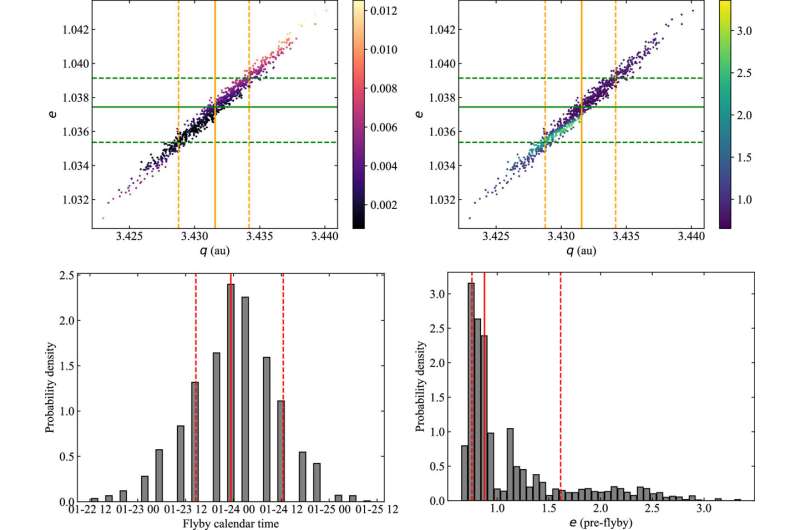August 2, 2024 report
This article has been reviewed according to Science X's editorial process and policies. Editors have highlighted the following attributes while ensuring the content's credibility:
fact-checked
trusted source
proofread
Study of comet A117uUD data suggests it was put on a 'hyperbolic trajectory' during pass by Saturn

A pair of astrophysicists from Ciudad Universitaria and Universidad Complutense de Madrid, both in Spain, report evidence that comet A117uUD was put on its current "hyperbolic trajectory" when it passed close to Saturn two years ago.
In their study, published in Research Notes of the AAS, Carlos de la Fuente Marcos and Raúl de la Fuente Marcos, analyzed observational data and created a model to trace the path of the comet and track the origin of its current trajectory.
Comet A117uUD was first observed two months ago by a team with the Asteroid Terrestrial-impact Last Alert System. Since that time, other organizations have made 142 observations of the comet, leading to the finding that it is on a "hyperbolic trajectory"—meaning that it will leave the solar system at some point in the foreseeable future. This finding was based on its path over the past two months and the speed at which it is traveling, which is much faster than comets that continue to circle the sun.
The researchers studied all the available data for the comet to build a model that allowed them to unwind the path the comet had taken over the past two years. They found that it had traveled near Saturn in 2020, which would explain its high speed and likely change in heading.
When smaller objects, such as comets, come near a larger spinning object, such as a planet, some of the planet's momentum is transferred to the smaller object, increasing its speed and slightly slowing the planet's orbit.
The researchers also noted that the close pass by Saturn had made it nearly impossible to trace its path prior to the encounter, though they suggest it is not likely that it originated outside the solar system.
This finding of a comet on a hyperbolic trajectory is only the second that has ever been observed—comet C/1980 E1 was found to be on an escape path back in 1980.
More information: Carlos de la Fuente Marcos et al, Comet A117uUD Goes Interstellar after Encountering Saturn in 2022, Research Notes of the AAS (2024). DOI: 10.3847/2515-5172/ad65fc
© 2024 Science X Network




















